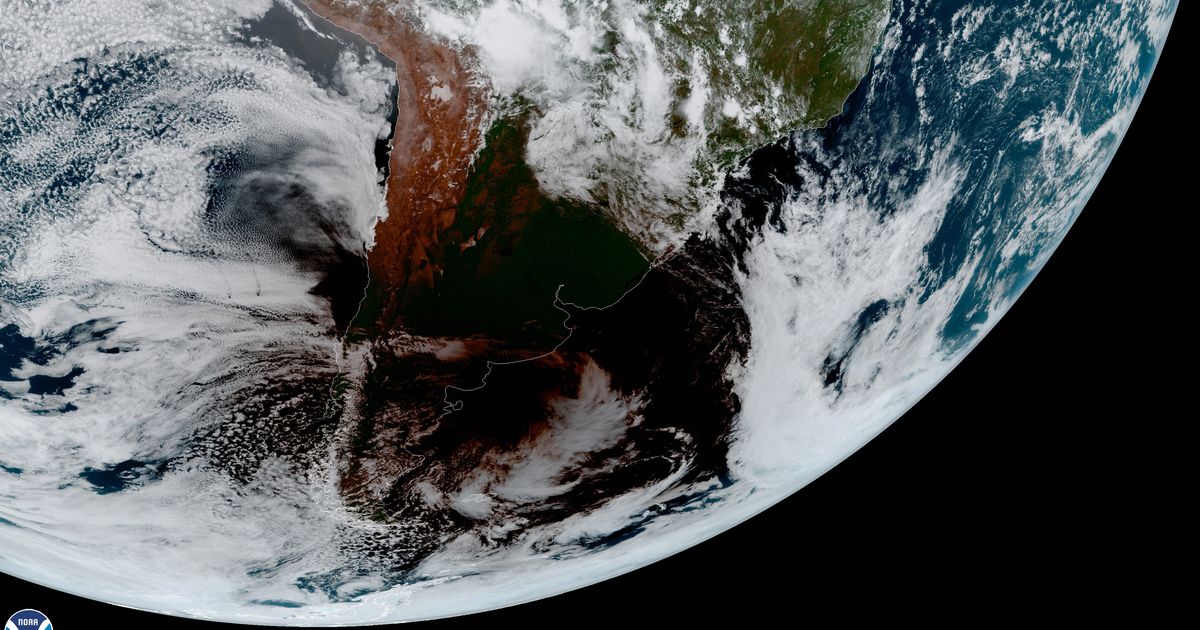
See that dark red blob over South America? That’s a solar eclipse.
Or at least, that’s what a solar eclipse looks like from far away. On December 14, some people in Chile and Argentina witnessed a total solar eclipse, the only one of 2020. But if you weren’t lucky enough to be there, the National Oceanic and Atmospheric Administration’s Geostationary Operational Environmental Satellite has you covered. It captured the entire thing from far above the Earth, and the results are stunning.
The gif is a time-lapse composite of satellite images, and the red blob moving across the Earth is actually the moon’s shadow. In a solar eclipse, the position of the Earth, the moon, and the sun line up so that during the day, the moon briefly blocks out all of the sun’s light, and the moon casts its shadow on Earth. The sun will appear to be entirely blocked out by the moon for people in the area where the inner part of the moon’s shadow, the umbra, falls.
People in areas where the outer part of the moon’s shadow falls, called the penumbra, see a partial solar eclipse. For today’s eclipse, that included much of South America as well as a small portion of Africa’s southwest coast. If the sun were a little bit farther from the Earth, there would be what’s called an annular solar eclipse, in which the moon appears to not block the entire sun and a ring of the sun is still visible. An annular solar eclipse was visible in parts of Africa and Asia in June.
But this is the first, last, and only total solar eclipse of 2020. Because the sun, moon, and Earth need to line up exactly right to create solar eclipses, they are relatively rare, and total solar eclipses are rarer still. The next solar eclipse will be an annular one across Canada, Greenland, and areas of Asia in June of 2021. It will be even harder to view in person than this one — it will be visible in Antarctica. You might want to get used to watching the eclipse via satellite image gif. Luckily, what a gif it is.
